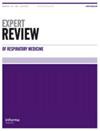Selection of the access channel in bronchoscopic intervention
IF 2.9
3区 医学
Q2 RESPIRATORY SYSTEM
引用次数: 1
Abstract
ABSTRACT Background At present, bronchoscopic intervention has become an important treatment approach for central airway obstruction (CAO). Choosing an appropriate access channel for different patients during this operation has become a research focus. Methods Data of bronchoscopic interventions in 201 patients with CAO in which one of endotracheal intubation, laryngeal mask, or rigid bronchoscope were used as the only access channel were retrospectively reviewed. Results The total immediate effective rate was 94.1% (398/423), and the main complications related to the access channels included hypoxemia, elevated arterial partial pressure of carbon dioxide, arrhythmia, airway mucosa tear, glottic edema, vocal cord injury, tooth loss, massive bleeding, airway mucosal necrosis, and asphyxia. The incidence of complications was 16.8% (71/423). Glottic edema was the most common complication with an incidence of 7.8% (33/423) and accounted for 46.5% of all complications. Glottic edema only occurred in the laryngeal mask and rigid bronchoscope groups, and the incidence was significantly correlated with the operation time (p < 0.001). Massive bleeding related to the access channel remains the most serious complication. Conclusions Endotracheal intubation, laryngeal mask, and rigid bronchoscope each have their own advantages and disadvantages. The most appropriate access channel should depend on a comprehensive assessment of the patient.支气管镜介入治疗通道的选择
背景目前,支气管镜介入治疗已成为中央气道阻塞(CAO)的重要治疗手段。在该手术中,为不同患者选择合适的接入通道已成为研究热点。方法回顾性分析201例以气管插管、喉罩、刚性支气管镜为唯一通道的支气管镜介入治疗的资料。结果总即刻有效率为94.1%(398/423),与通道相关的主要并发症为低氧血症、动脉二氧化碳分压升高、心律失常、气道黏膜撕裂、声门水肿、声带损伤、牙齿脱落、大出血、气道黏膜坏死、窒息。并发症发生率为16.8%(71/423)。声门水肿是最常见的并发症,发生率为7.8%(33/423),占所有并发症的46.5%。声门水肿仅发生在喉罩组和刚性支气管镜组,且发生率与手术时间显著相关(p < 0.001)。与通道相关的大出血仍然是最严重的并发症。结论气管插管、喉罩、刚性支气管镜各有优缺点。最合适的访问渠道应取决于对患者的全面评估。
本文章由计算机程序翻译,如有差异,请以英文原文为准。
求助全文
约1分钟内获得全文
求助全文
来源期刊

Expert Review of Respiratory Medicine
RESPIRATORY SYSTEM-
CiteScore
6.80
自引率
2.60%
发文量
90
期刊介绍:
Coverage will include the following key areas:
- Prospects for new and emerging therapeutics
- Epidemiology of disease
- Preventive strategies
- All aspects of COPD, from patient self-management to systemic effects of the disease and comorbidities
- Improved diagnostic methods, including imaging techniques, biomarkers and physiological tests.
- Advances in the treatment of respiratory infections and drug resistance issues
- Occupational and environmental factors
- Progress in smoking intervention and cessation methods
- Disease and treatment issues for defined populations, such as children and the elderly
- Respiratory intensive and critical care
- Updates on the status and advances of specific disease areas, including asthma, HIV/AIDS-related disease, cystic fibrosis, COPD and sleep-disordered breathing morbidity
 求助内容:
求助内容: 应助结果提醒方式:
应助结果提醒方式:


